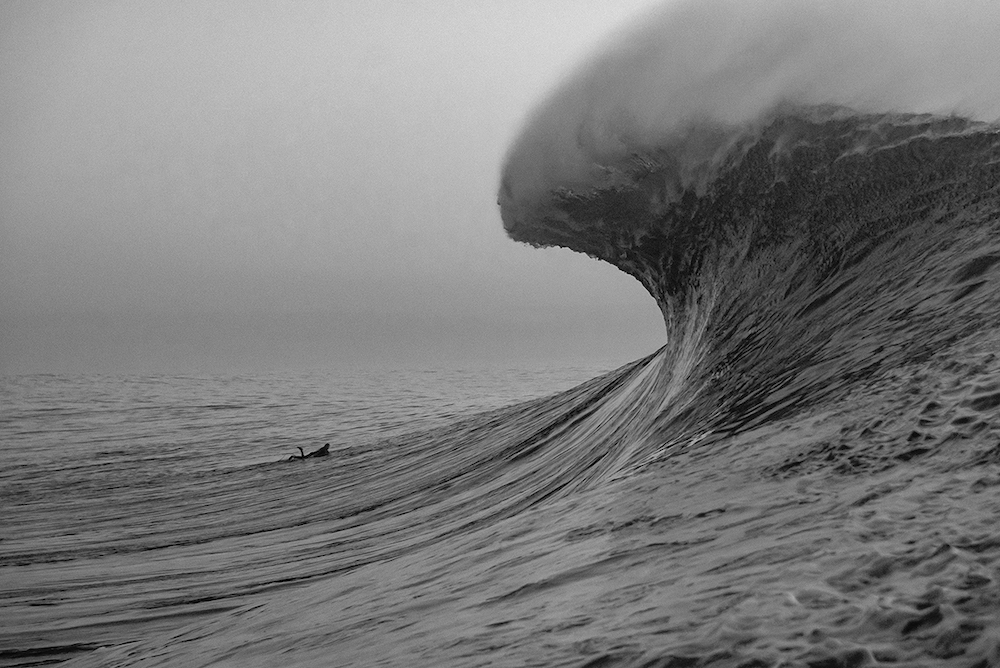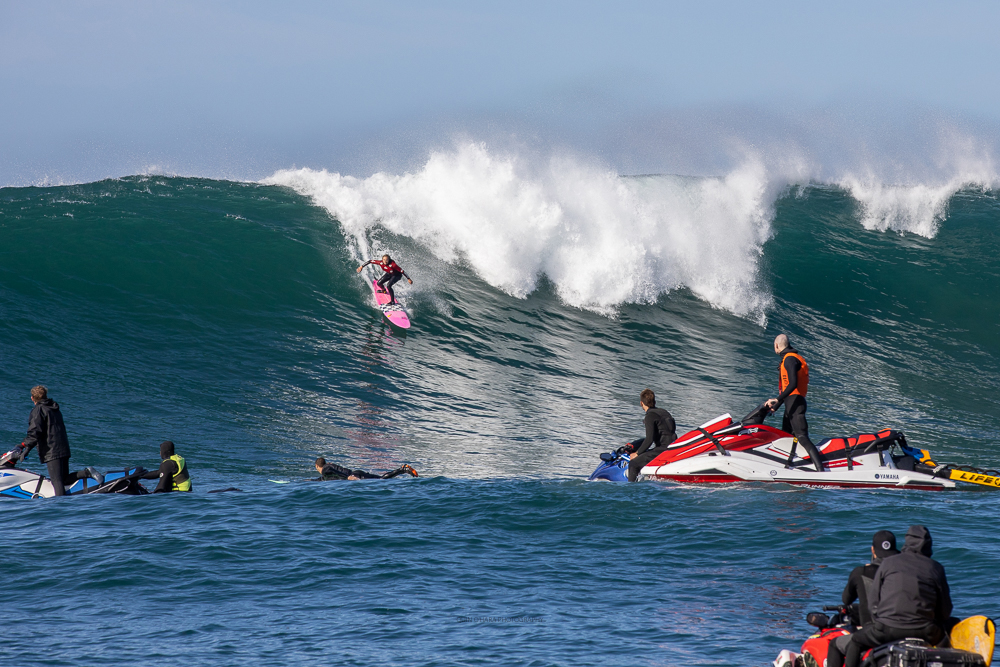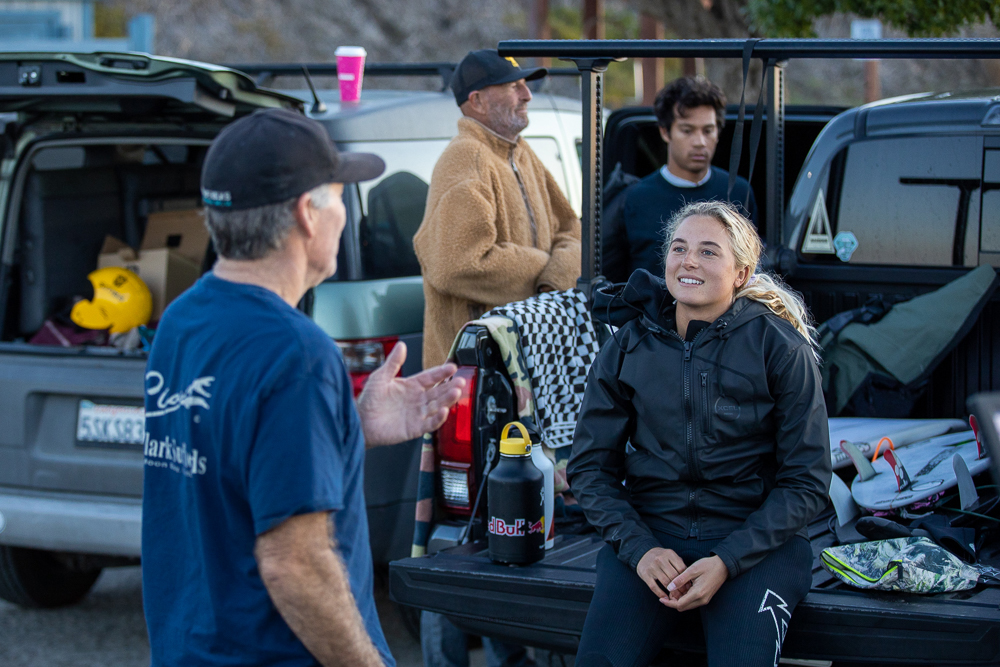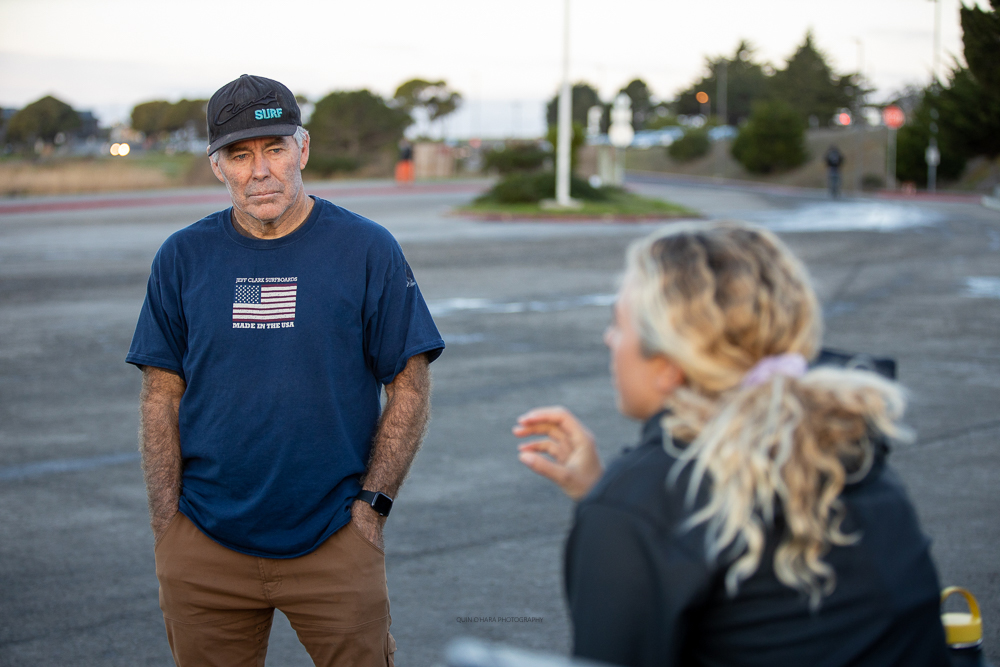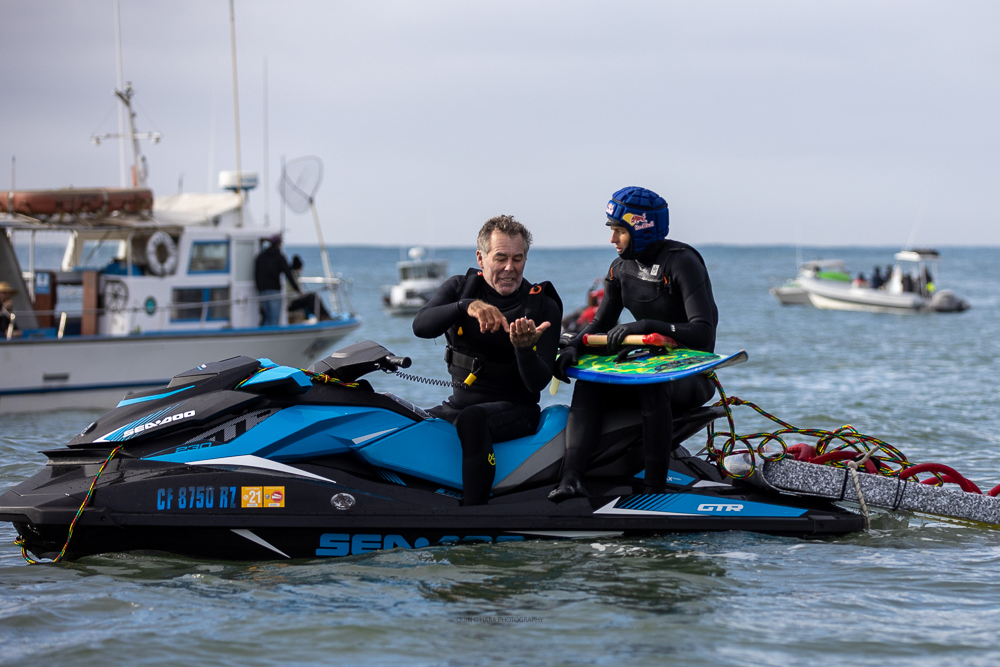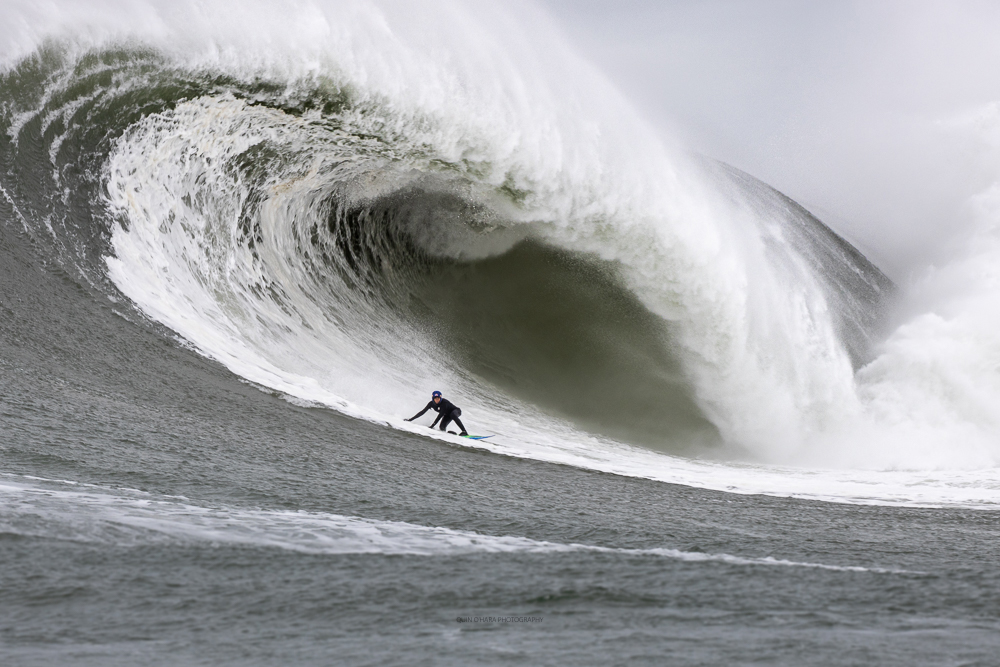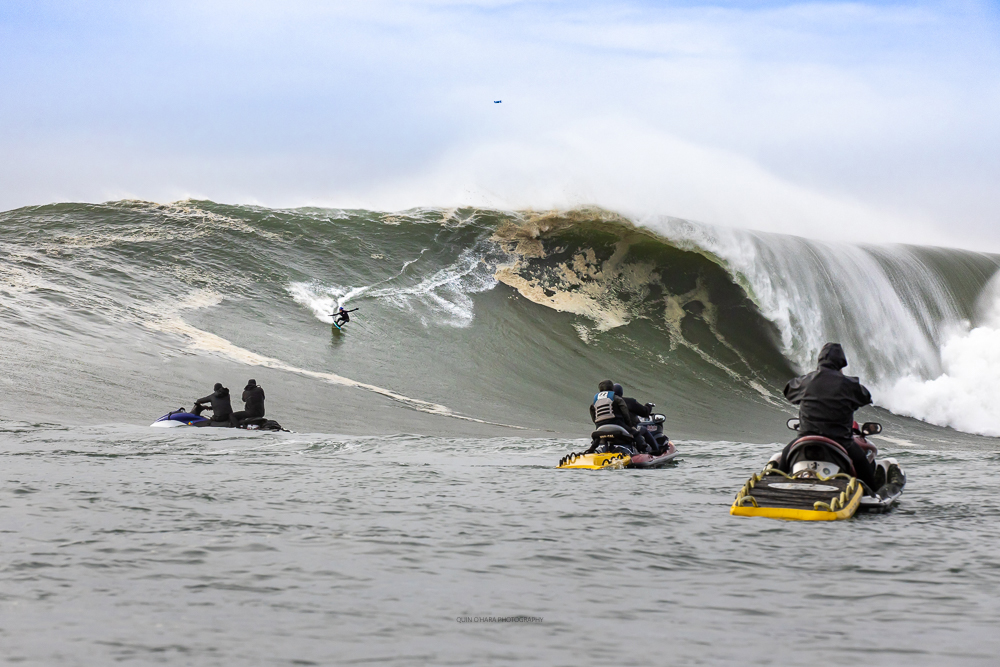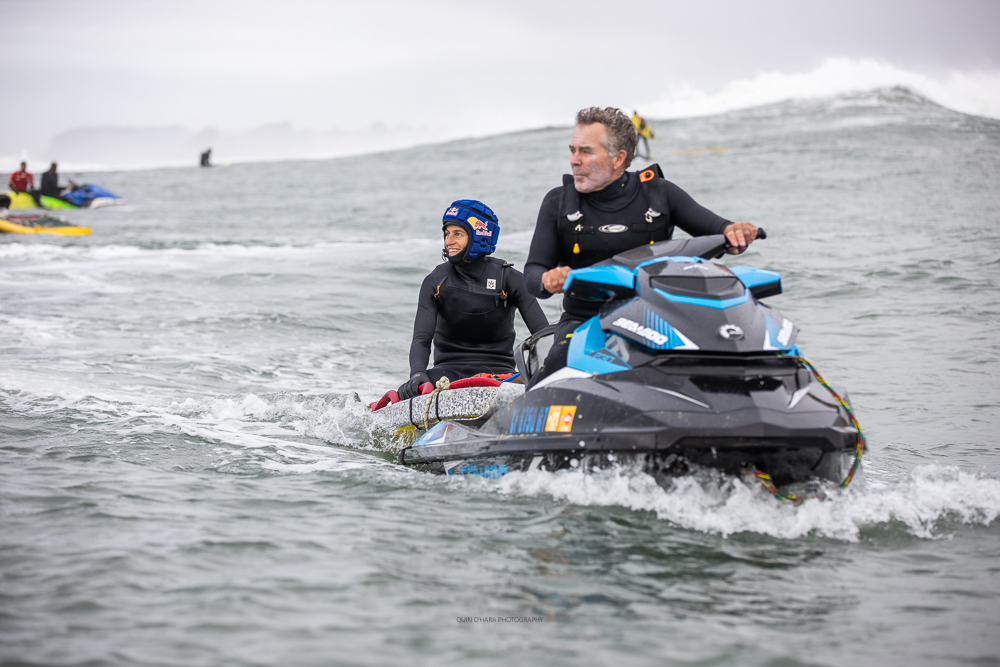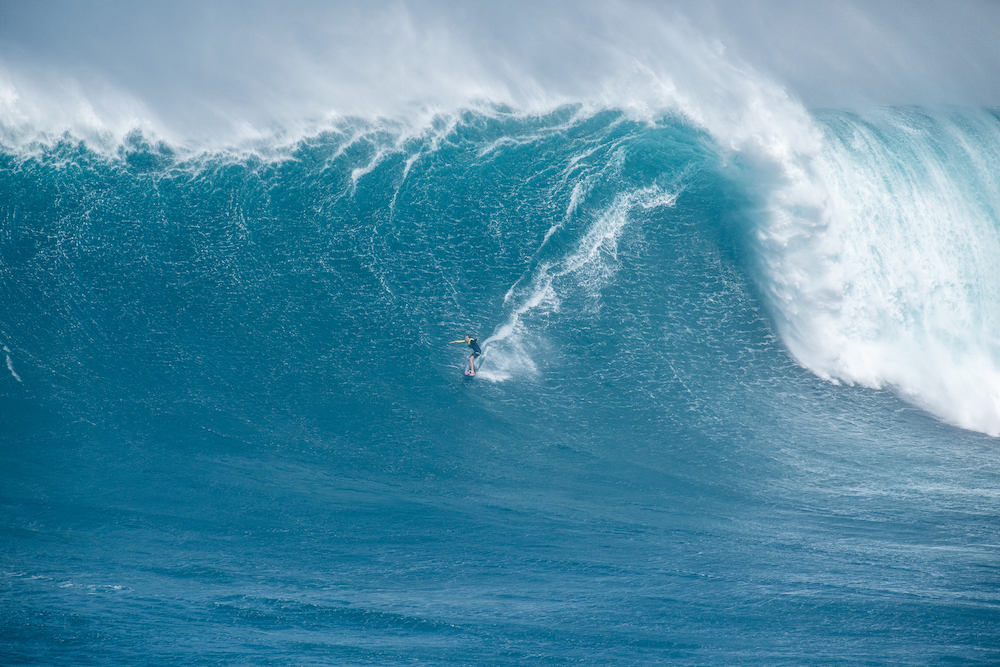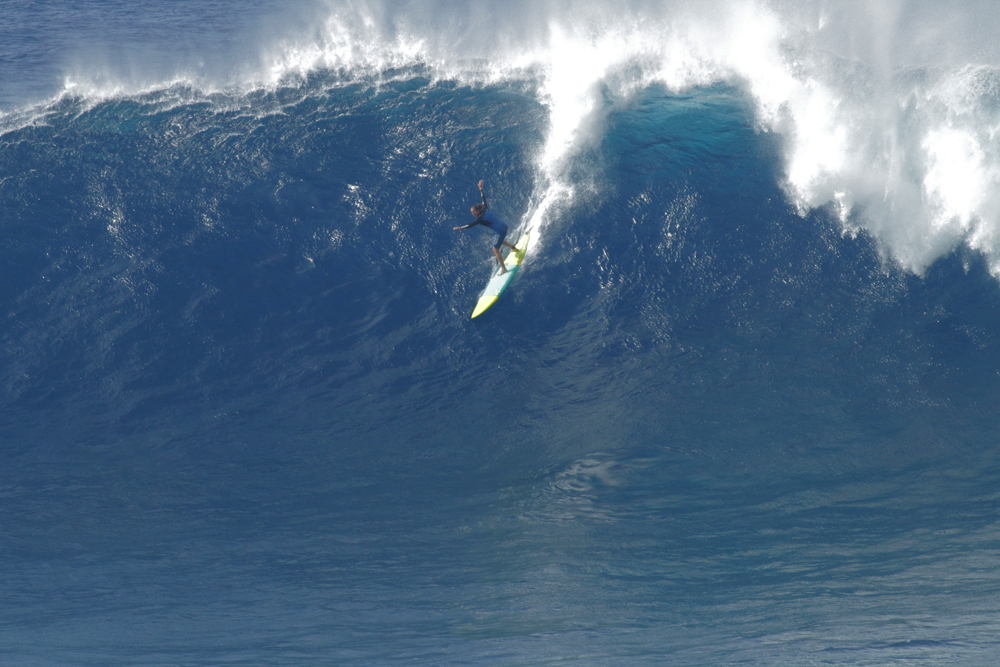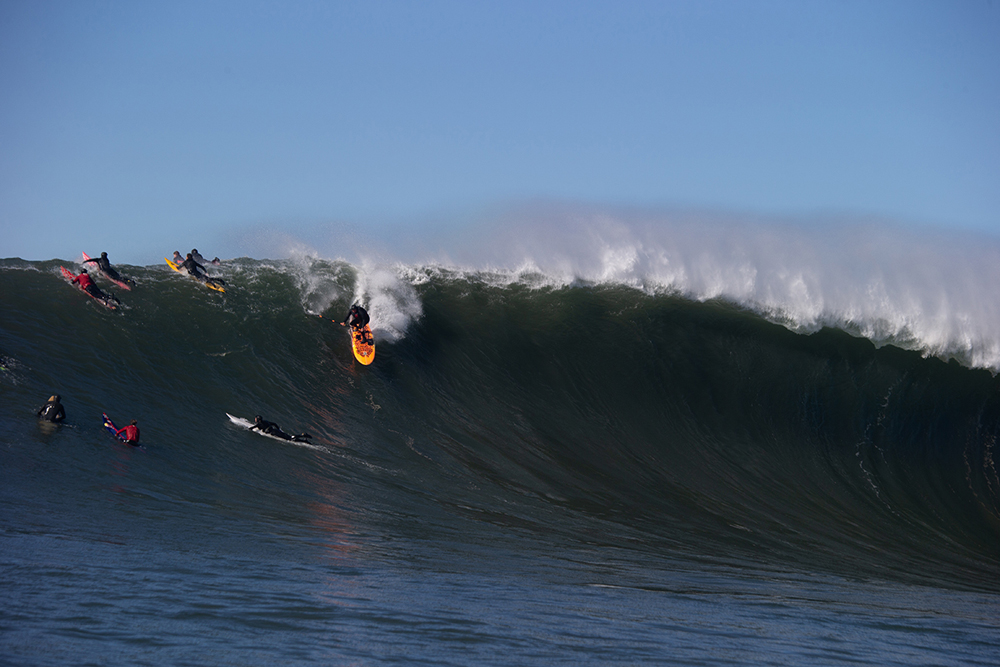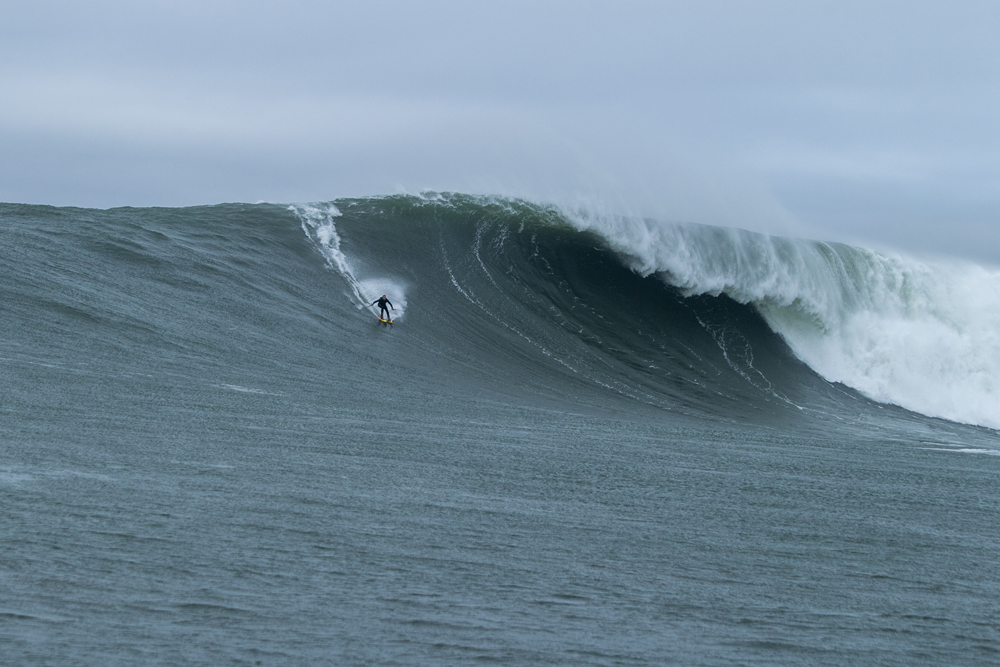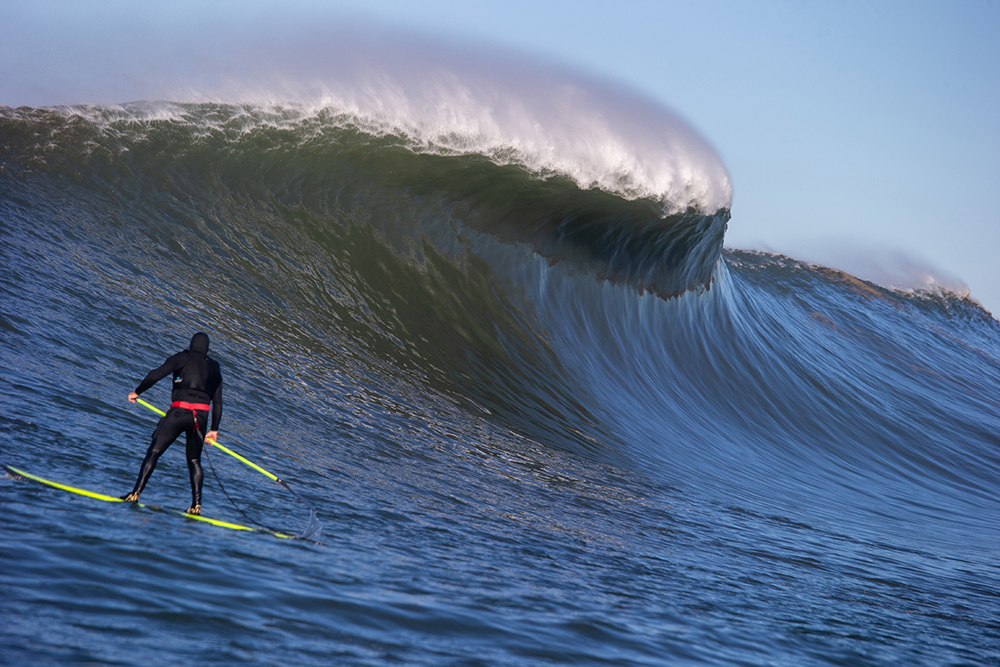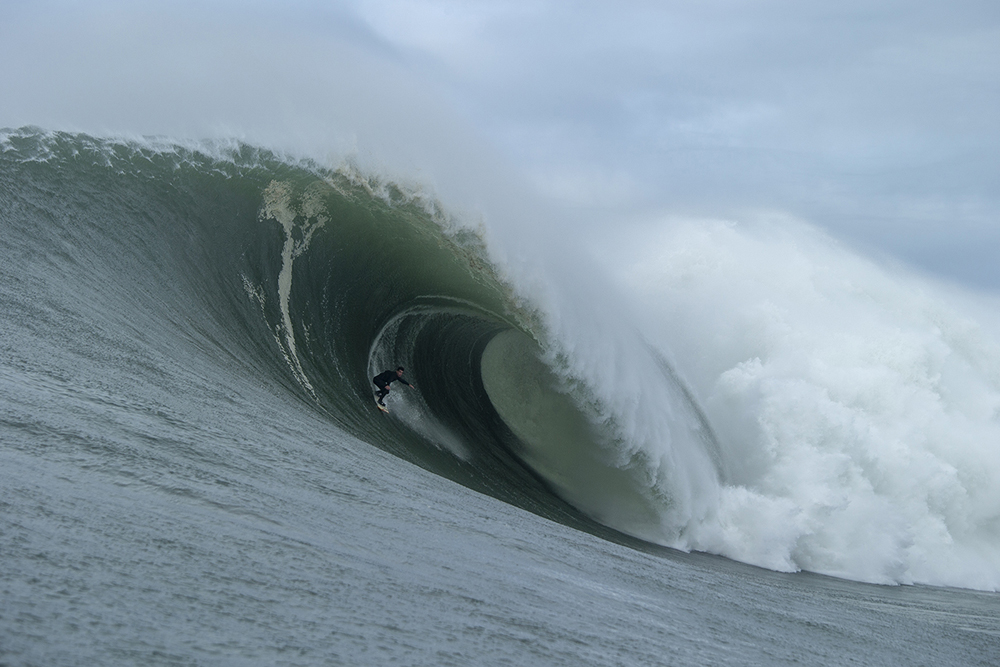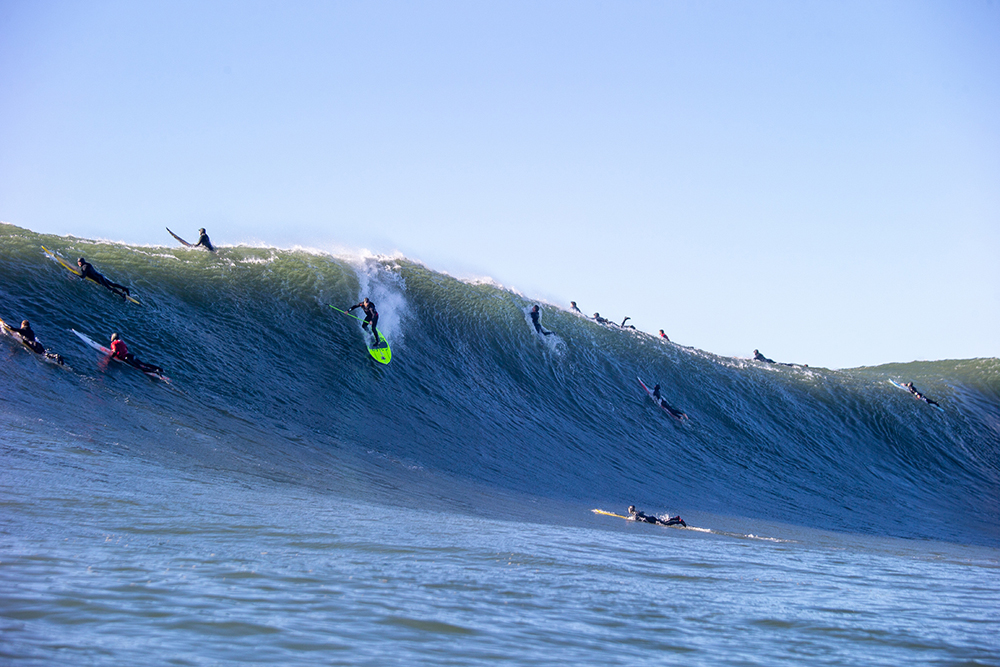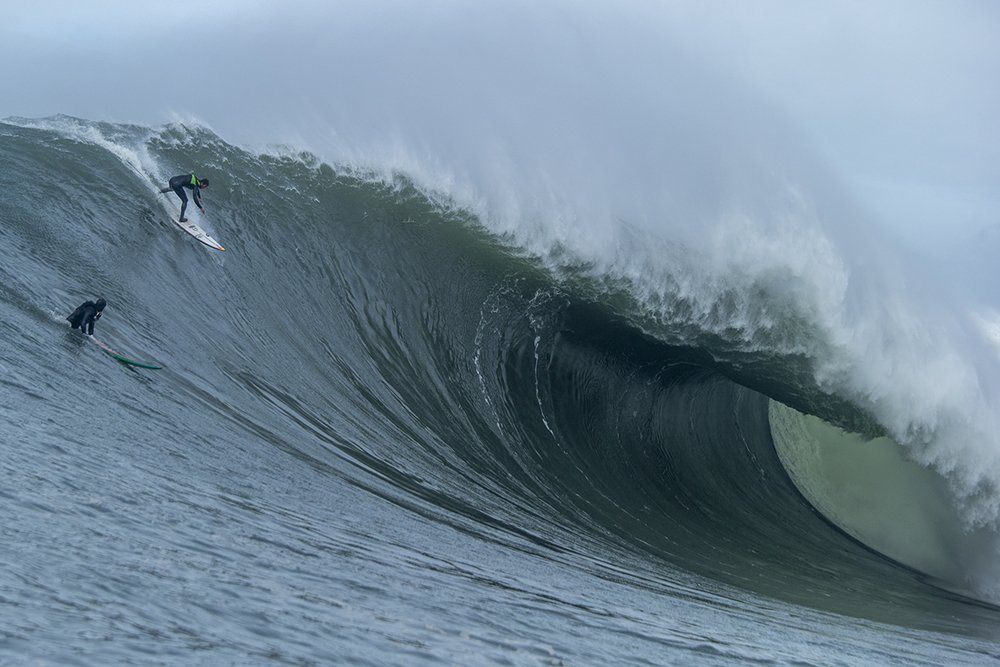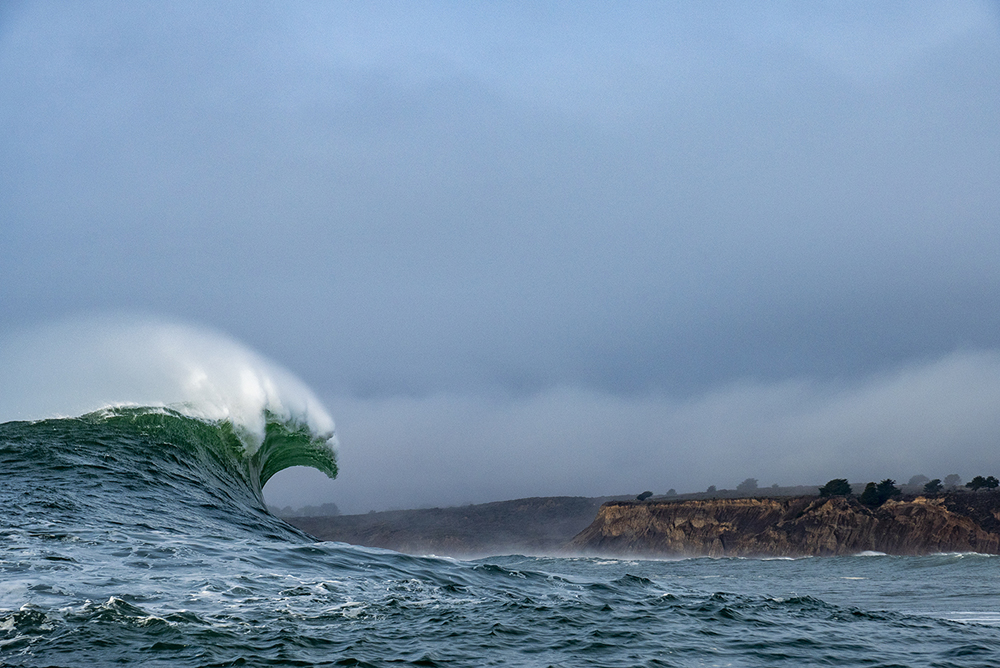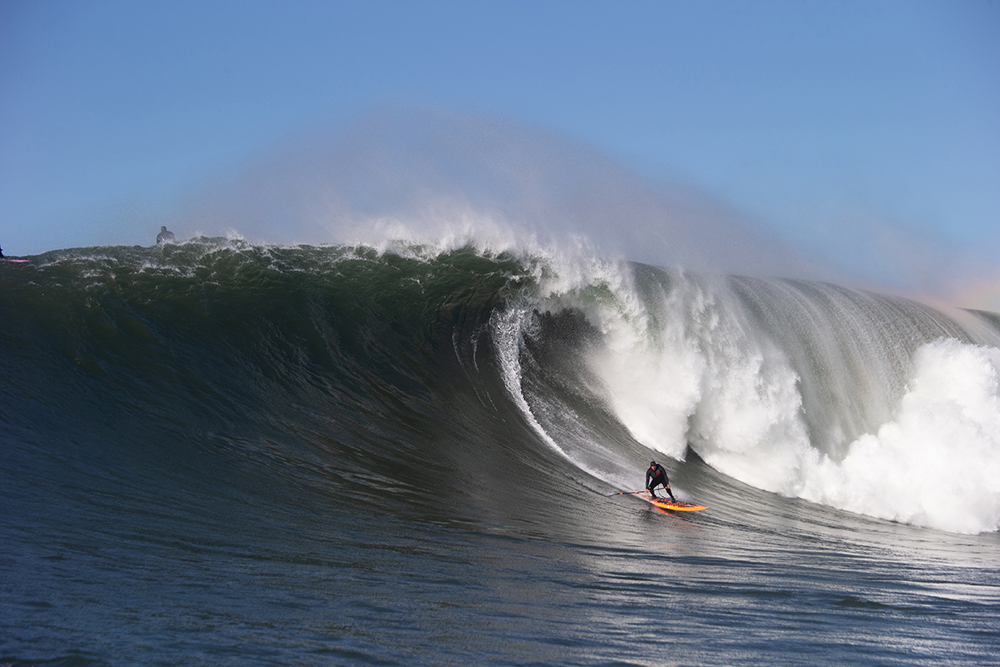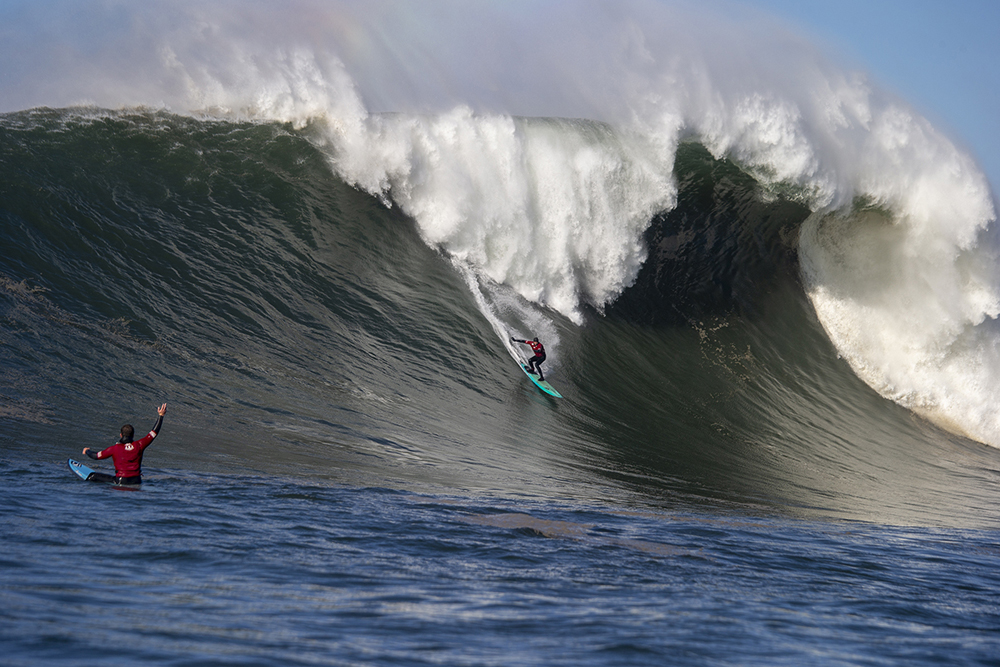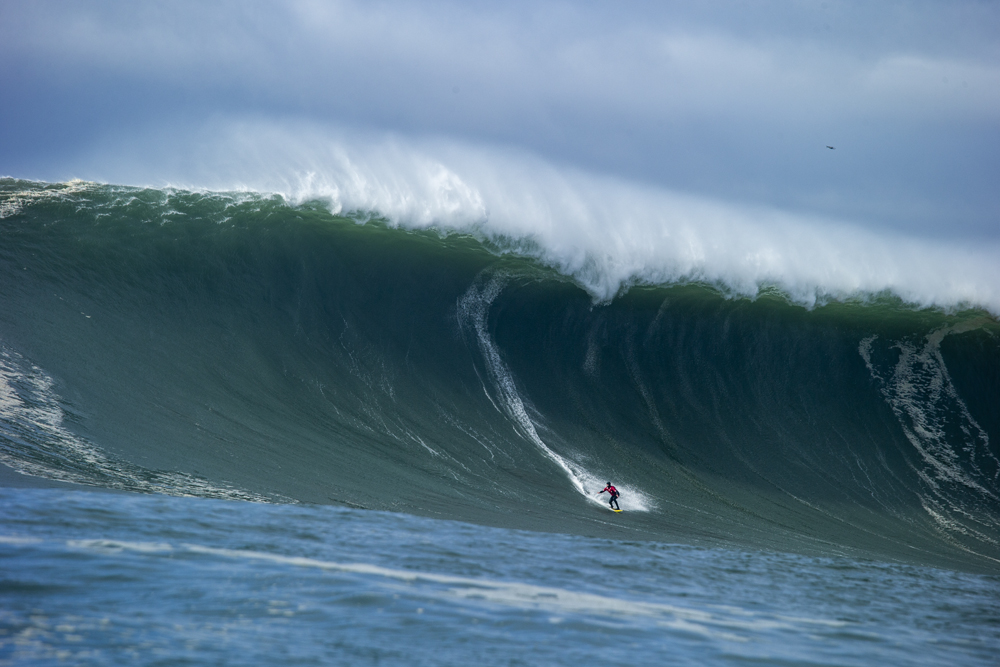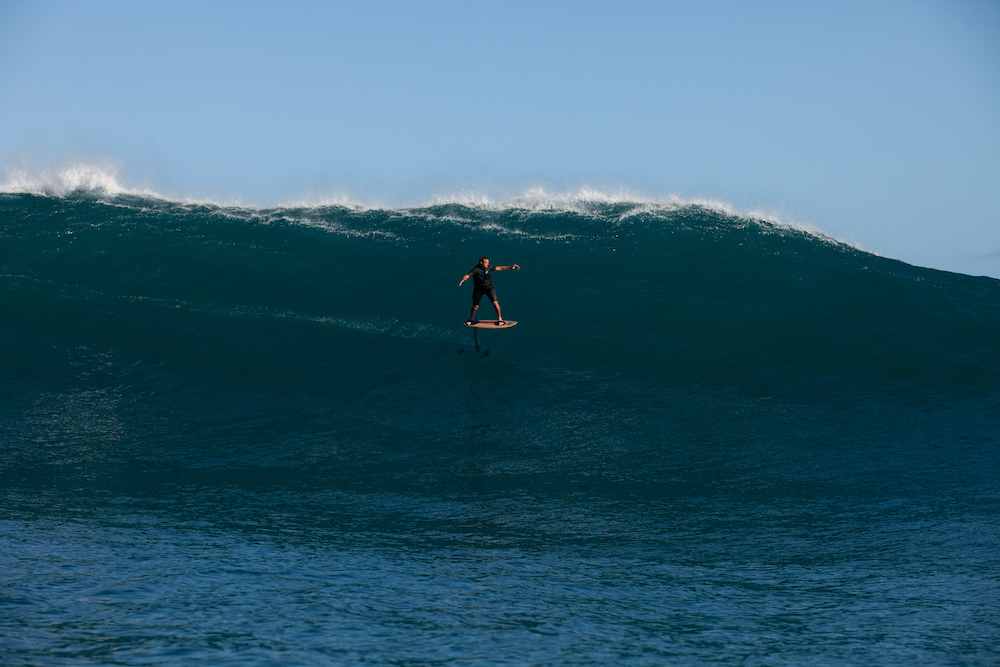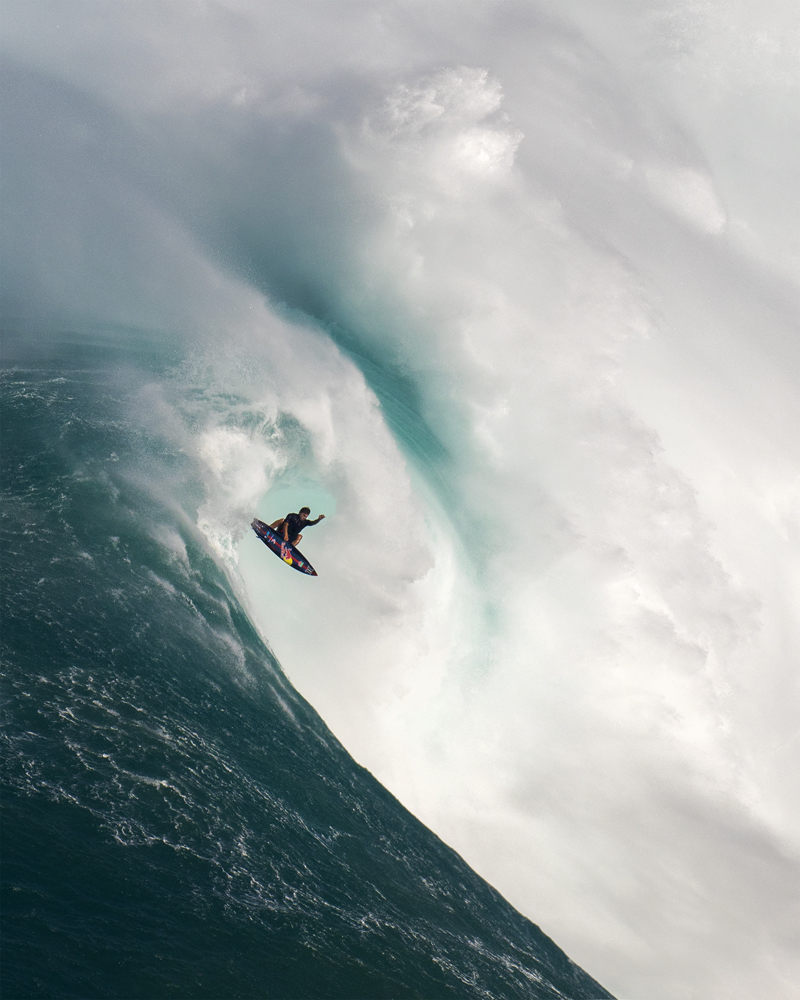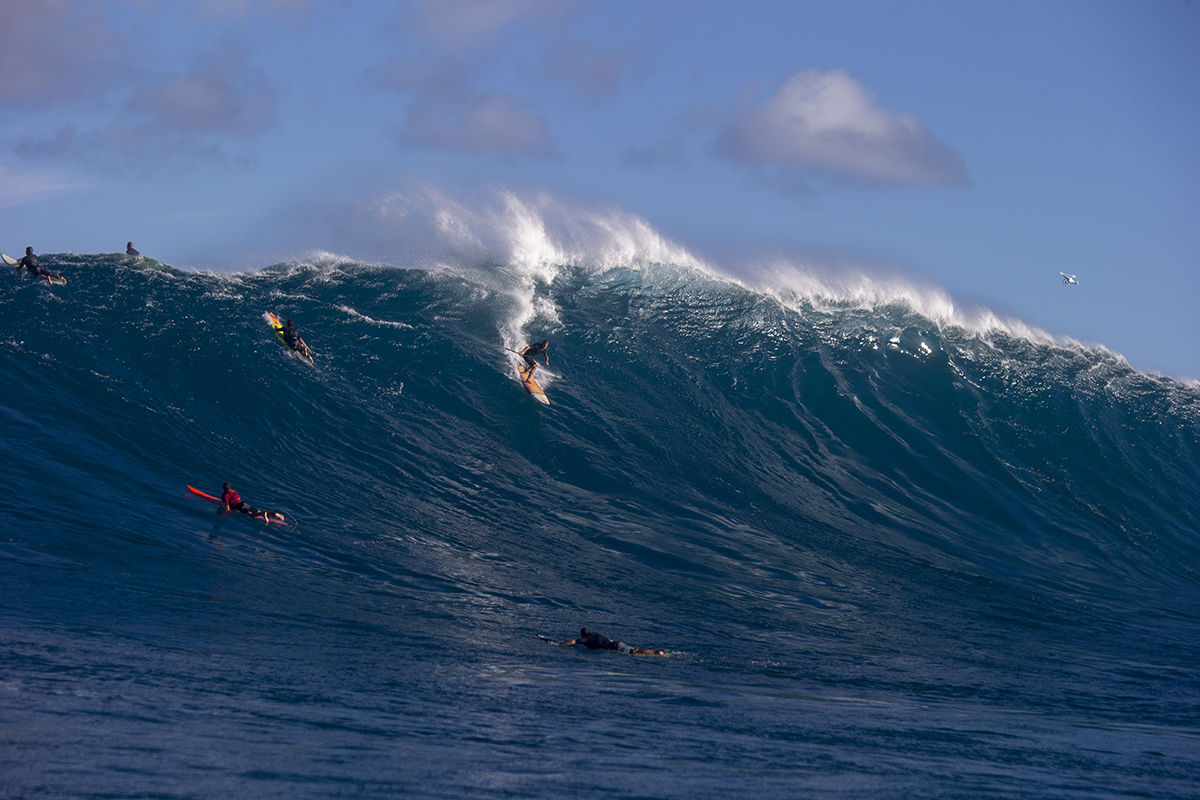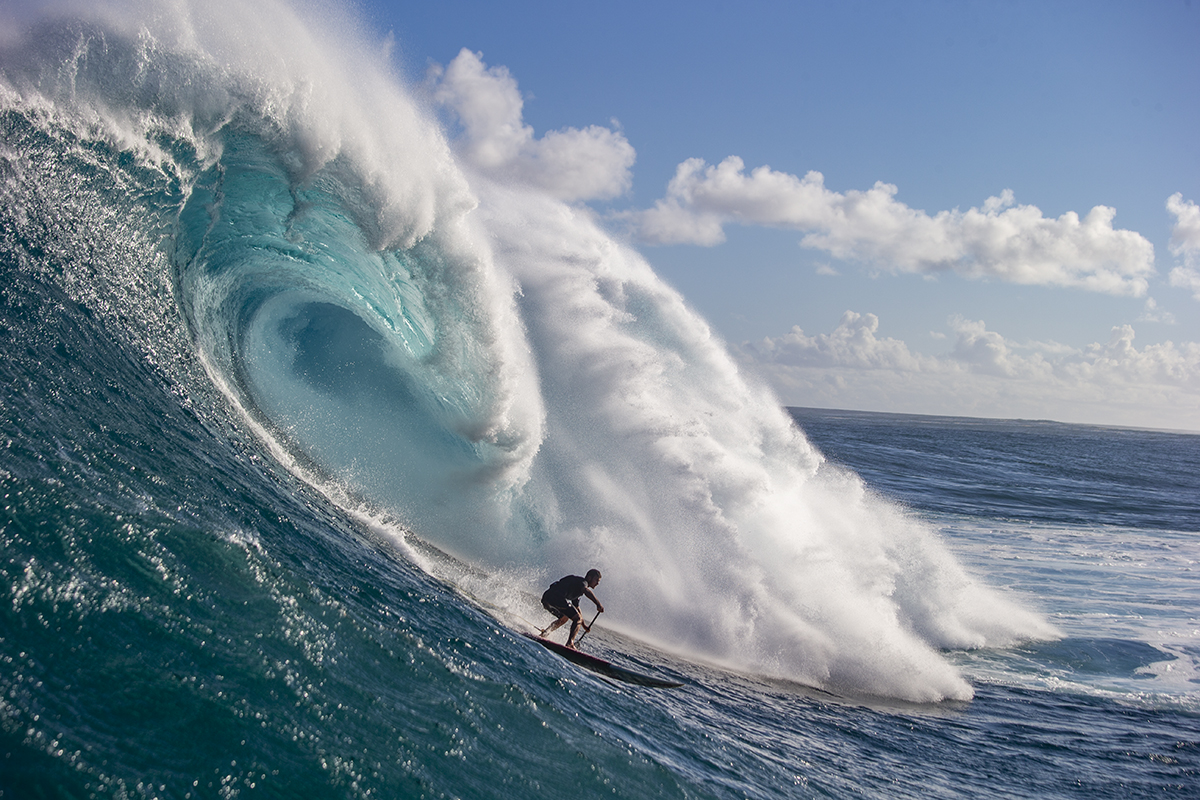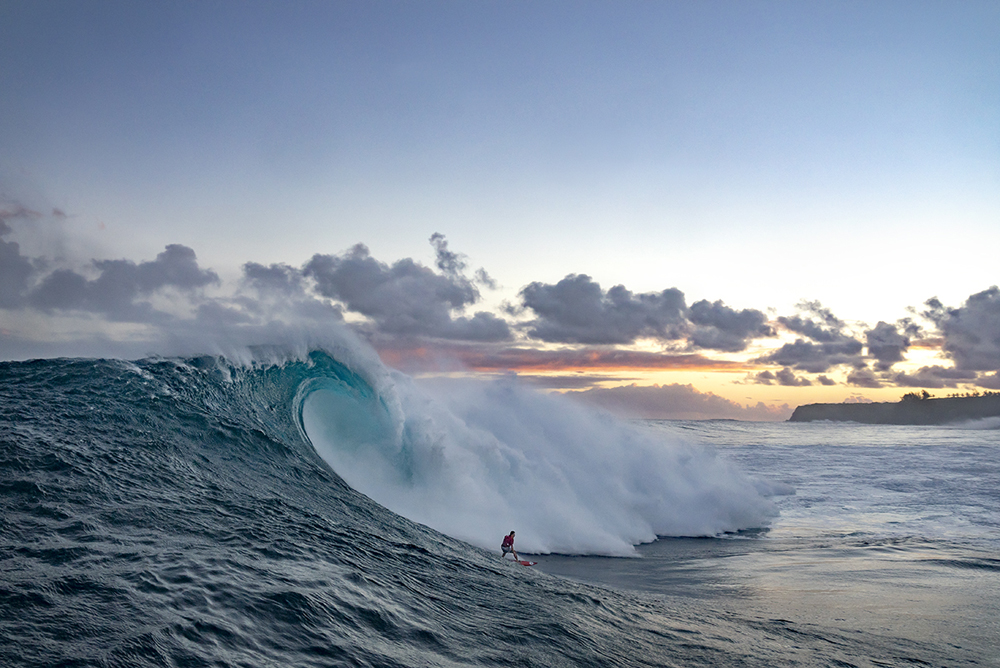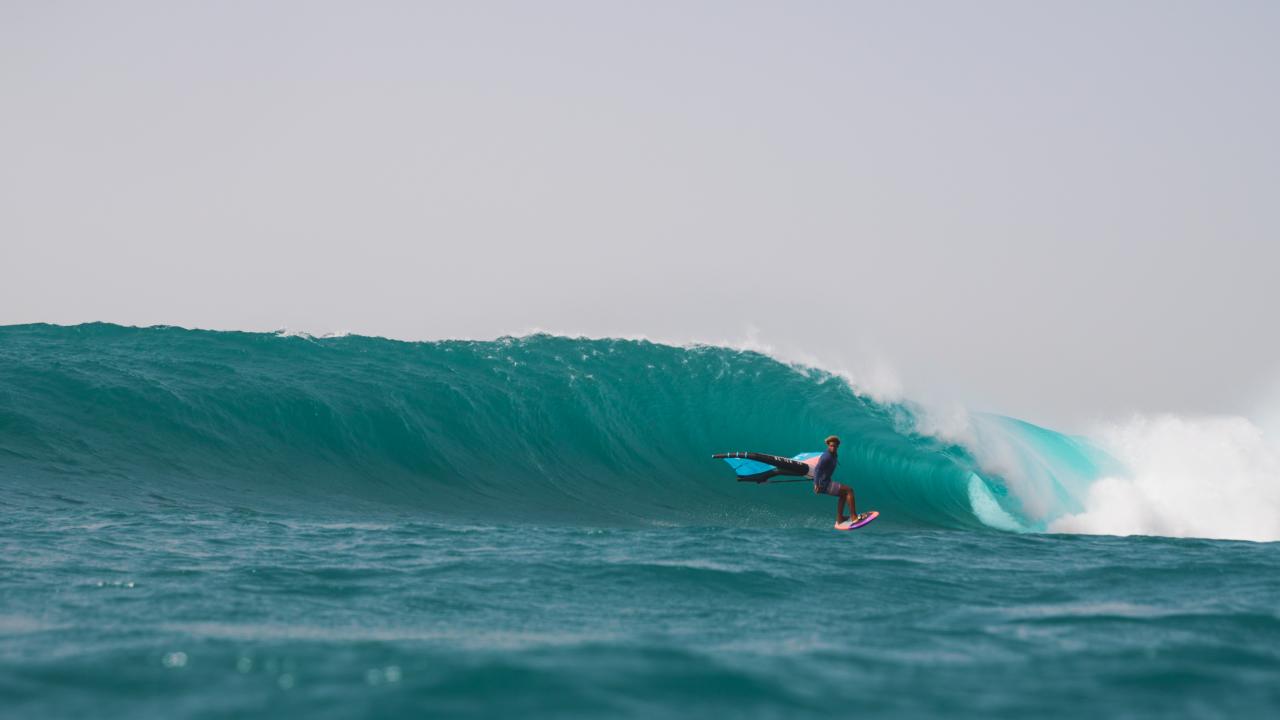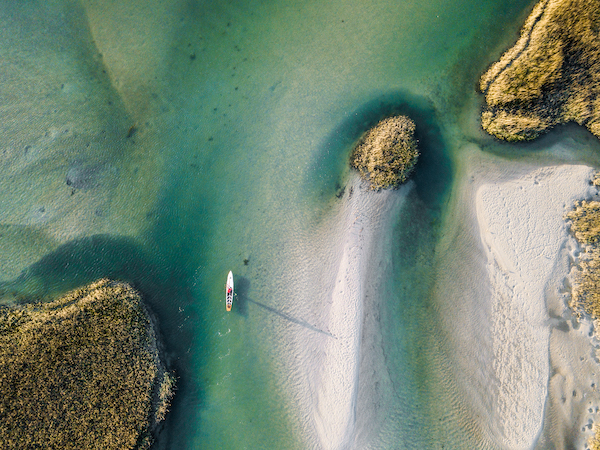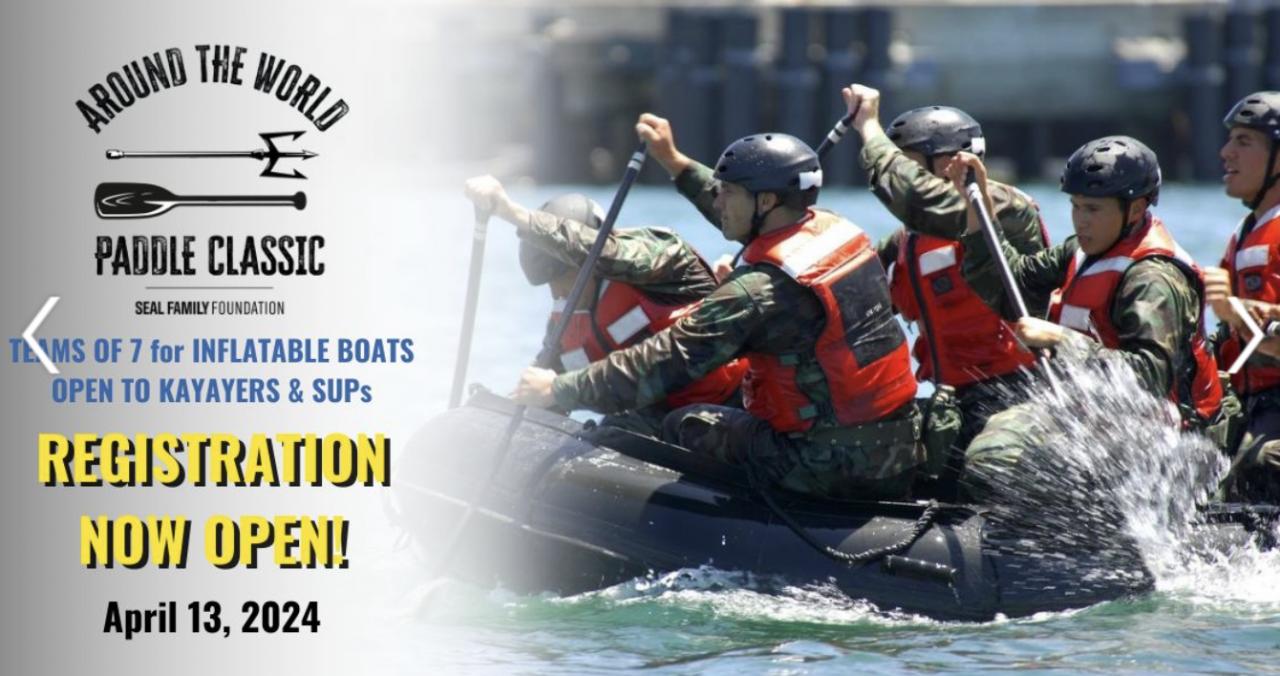For most of us, waves start feeling big at about head high or a little over head. That's where we feel our adrenaline start to kick in and feel a surge of extra speed under our feet. The exhilaration of dropping in on a wave that's just outside our comfort zone sets our spirit on fire as time stands still while we play out one of two possible scenarios - a clean exit or a violent thrashing.
Fortunately, most of us don't surf waves that carry serious consequences. We generally know what we're capable of, we know how big the waves will be on any given swell, and we're confident we won't see anything that could potentially kill us. But that's not the case for every surfer.
Buried deep within the legends of surf culture are the boldest and most daring members of our tribe who are driven to chase and ride the biggest waves in the world. This band of big wave riders are a sub-cult within the surfing ranks where brotherhoods and sisterhoods run deep and obsessions with riding the biggest wave possible drive every life-guiding decision they've ever made. Whether the drive to surf big waves stems from bravery, insanity, spirituality, or obsessive goal setting, it's clear that every big wave surfer feels an uncontrollable, indescribable urge to put themselves directly in the path of every major storm system they track.
So who are these people? Big wave lineups carry familiar names. We see them printed in the stories and photo captions of magazines, websites, and social media posts with each swell. They’re guys like Laird Hamilton, Kai Lenny, Jeff Clark, Peter Mel, Billy Kemper, Greg Long, Will Skudin. They’re also women like Paige Alms, Justine Dupont, Keala Kennelly, and Bianca Valenti. Most of them are sponsored, having found a life and a lifestyle that allows them to drop everything at a moment's notice to chase a swell. What you don't generally see are the months, the days, the hours spent in anticipation of the next giant swell.
Meticulous Planning: the Next ‘Go Out’
The gaps in time between swell events follow a ritualistic pattern of rigorous physical training, scrupulous nutritional fueling, and obsessive studying of weather forecasting models as they wait for the next game day opportunity to present itself.
On any given swell, every big name surfer in the lineup is hoping for a chance to catch at least one wave. They may have to wait all day for that wave. The last time they had this opportunity could have been a month ago or a season ago. Who knows how long it may be until the next swell? The season could end before there is another swell of proportionate size, in which case they'll wait another year. There are only so many swells in any given year and each swell only has so many sets and each set only has so many waves. Considering the amount of time and energy spent waiting and planning there's an inverse proportion of possibility in catching the thirty second ride that feeds this obsession.
When all that planning and traveling finally does land them in the lineup and the first set of the day is staring them down, every survival instinct in their body tells them to paddle like hell for the horizon. And then it happens: that mental trigger in their head reminds them of why they're there and everything they've done to get themself to this very moment. They paddle over the first one because their eyes are locked on the second one - that's the one they want because that's the one that wants them.
You don't pick the wave, the wave picks you.
Paddling In: the Drop, the Ride, the Breath Holds
As they turn and start paddling as hard as they possibly can, they feel the wind blowing up the face and the energy of the swell pushing the wave further upward until the lip is almost vertical. They're fully committed to making the drop regardless of the outcome. For Jeff Clark, his motivation to surf big waves comes from this very moment when he becomes hyper focused through an acute awareness of everything that's happening at that very moment. "Things are in slow motion for me - calculated. I can see and feel every drop of water. What allows me to do this is a laser focus and knowledge beyond what most people can comprehend about the medium which I am in." Jeff's passion to surf big waves cancels out any thoughts or feelings of fear, he's out there for the pure love of charging big surf. "I am enjoying the ride because I’m part of it and dance with it. Like my good friend the late Jay Moriarity said, I can’t imagine being scared when I surf Mavericks."
Paige Alms, a big wave rider from Maui, feels similarly. "I love the feeling you get when you take off on a big wave and everything goes silent. You’re 100% in the moment, relying on years of experience riding waves, and the seconds slow down and you’re just... in the flow. The rush you feel when you get a really good one is hard to beat. I have yet to find something that fills my soul the same way that riding a good hollow heavy wave does."
Every so often there's a session that goes way beyond the typical "go out" becoming a mission-driven exercise of detailed planning and execution. In these cases big wave surfers aren't simply "going surfing", they are tactfully planning every last detail down to the gear they ride and the safety equipment they'll need. In almost every case there's a plane ride involved with logistics on both ends from porting all the gear, to airport pickups, to lining up a place to stay, to gaining access to a ski or a boat. There are support people involved who help keep them moving in the direction of their goal while pausing to consider all the consequences and exits should things go bad. Inflation vests, CO2 cartridges, jetskis, support boats, photographers, board caddies, food, and water all need to be accounted for and organized in a such a way that doesn't ever compromise the singular objective of the day. One such session resulted in the near death of pro surfer Greg Long out at Cortes Bank, a shallow seamount sitting 100 miles off the coast of San Diego.
“Having trained for extreme breath holding, at no point did I allow myself to panic or lose confidence that I was going to survive this incident. I do, however, fully acknowledge that I did exceed my limits of endurance, and that there will always be elements of risk and danger that are beyond my control while surfing waves of any size" said Long in a statement following the event.
Big wave surfers train extensively on breath holding techniques under severe duress to prepare themselves for one and two wave hold-downs. They are taught to relax as they're plunged to absurd depths that threaten to burst their eardrums due to extreme atmospheric pressure differences. Relaxing their body prolongs oxygen reserves. Resisting or swimming against the wave's energy promotes excessive blood flow which in turn burns through oxygen reserves more rapidly.
In reality, even the worst wipeouts account for less than a minute of underwater time. Any one of us can hold our breath for that long. But what if your heart rate is up from the exhilaration of the wave you just rode, or maybe you didn't get a full breath before the white water consumed you? That's where your training pays off by giving you the confidence and awareness you need to remain calm, knowing that the wave's energy will pass through you before the need to breathe kicks your anxiety levels into overdrive.
Chasing Swell: Will Skudin
California and Hawaii have seen an unprecedented run of swell this season, and there seems to be no end in sight. It's not uncommon for surfers to surf a giant swell in Hawaii, jump on a plane to catch that same swell as it slams the coast of California, then drive ten hours to the island of Todos Santos for the last leg of the swell's path. If a second system pops up on the radar, those same surfers head back to Hawaii to start the triangular surf pilgrimage all over again. At the time of this writing, there's a massive WNW swell bearing down on the coast of California. Virtually every big wave surfer has found their way into the lineup at Mavericks to experience what has been called the biggest swell in the last 20 years.
So what drives big wave surfers to chase down storms? I got a chance to catch up with some of the crew that were out at Mavericks for that historic early January swell to ask them that very question.
"The phone rang and I picked it up," were the words that Will Skudin gave me in his calm, melodic voice. I asked him to elaborate on what that meant. "Every big wave surfer has something wrong with them", he said. "That's a fact. We're out there to deal with it because if we don't, that thing will continue to haunt us".
Big wave surfing is literally therapeutic for many surfers. Whether they're carrying some kind of monkey on their back, or burdened by relentless and continuous anxieties, the rush that only big waves can deliver is the one thing that frees them of the "baggage" they carry. Responding to a swell and moving in the direction of travel seems like a hypnotic response to a call that brings them to the place they need to be in order to feel better. Missing a swell only makes things worse. Fear of missing out isn't the issue. Instead, it's the thought of missing an opportunity to feel better by receiving that much-needed shot of serotonin delivered through the rush of riding a giant wave. Better to go and get skunked than to not go and wish you had.
As each surfer arrives at a spot for an anticipated swell, they're greeted and reunited with a community of like-minded souls they haven't seen since the last swell event. The travel schedules of these surfers are rarely financially supported or sponsor driven. Each person is there because they want to be there in that moment more than any other place in the world. Many of the faces and names are consistently present at each and every swell. But often a particular swell will rekindle the big wave flame that may have been temporarily extinguished in a surfer, bringing them back into the fold. The reunions that take place in the boat harbors and parking lots are indifferent to the amount of time that's passed. Swell events bring everyone together like a siren call to share in the obsession and healing of riding big waves.
Expectations on big days have to remain in check. Most surfers go into a big wave session hoping to catch at least one wave. If they catch two, they're ecstatic. The reality is that most of the surfers will spend 6+ hours in the lineup only to return home with tales of waves they witnessed but never rode. Long period swells carry lengthy wait times between sets. It's not uncommon for sets to appear in 45 to 60 minute intervals. With an average of eight hours of daylight on any given winter day, most of those bobbing heads will go home empty handed. That can be a hard pill to swallow for most of them when considering the training, the travel, the promises and the sacrifices made to get them to that place. How do the outcomes on any given day affect the self confidence and egos of big wave surfers when a day doesn't go as planned?
"I just tell myself that today wasn't my day", says Will. "It's tough 'cause you start to second guess yourself, but you know you can't let yourself go there".
We all have moments of self doubt in the work we do and the professions we practice, but for big wave surfers who need that ride to carry them through to the next swell, it can be hard to stay positive if expectations aren't managed correctly.
Plenty of surfers were caught watching on the big day out at Mavericks.
Luck of the Dice: Jeff Clark
“99% of the set waves on Sunday went through unridden", says Mavericks pioneer and big wave charger Jeff Clark. I asked him how likely it is for surfers to paddle into waves of that size and he replied by saying, "It's like running across the freeway wearing all black and not getting hit by a car."
The size and frequency of empty waves that day eventually lured the tow teams in to take a turn. Jeff was teamed up with Justine Dupont from Nazaré and whipped her into some bombs. “I must have towed Justine into eight or ten waves that day" says Clark, "Justine puts in the work as a big wave surfer and she is as skilled as anyone out there. She rips at tow surfing."
One of the most memorable tow surfing waves we saw that day had to be from big wave charger Chuck Patterson, who was slung into a couple sets on his water skis.
"I had my skis with me, but kept them out of sight. I didn't want to draw a lot of attention to what I had planned until I knew I had a shot at pulling it off. Once the window opened up for the tow teams late in the day, I told my driver it was now or never. We got into the queue and I was able to pick off the third wave in the set. It wasn't as big as I would have liked, but it worked out and the response from everyone in the channel made it even more special", said Patterson.
Jeff Clark was one of those who witnessed the spectacle. "The last time we had a swell this big, Chuck and I were towing each other. That was 20 years ago," said Clark. "It was great to see him out there again."
Big wave surfers ultimately learn the value of patience. Our current world of short attention spans and thirst for immediate gratification have no place in the big wave realm. Each surfer has to put in their time before they can expect to see any results or reward. "You have to pet the horse's nose before you can jump on its back," explained Will Skudin.
Coming Up: Izzi Gomez
The sport is honored and enforced by the old guard. No one just powers out to the lineup on a jetski expecting to whip into one. There's an air of respect and gratitude that's built into the DNA of big wave surfing and enforced via the old school tactics of force and intimidation. That being said, there are a few newcomers making their way up the big wave ranks and building reputations as humble chargers who understand how the maturation process works. They start off in the channel watching the waves, feeling the rhythm of the sets and the energy of the swell. Then one day their coach, mentor, or inner voice convinces them they're ready to slide over to the peak in preparation for the first wave they'll paddle into.
One such newcomer was Izzi Gomez, the 5-time SUP Surfing World Champion who's been spending more and more time chasing big waves in Hawaii and at Mavericks.
"I got very comfortable in big waves from standup paddle surfing at spots like Cloudbreak and Sunset", says Gomez. "I had accomplished everything I wanted in SUP, and needed to challenge myself again." Her persistence in convincing her sponsors to make the shift finally took shape, allowing her to focus entirely on her big wave surfing game. Izzi went to work building her quiver of bigger boards, mentoring with big wave athletes like Paige Alms, Bianca Valenti and others, and has now found her way into the lineups of the biggest swells of the season. "I was in Half Moon Bay for two weeks straight in early January, and paddled out at Mav's seven days in a row. It was an incredible run of surf".
Swell On, No RSVP: Greg Carson
When it comes to social events like weddings, anniversaries, birthdays, or special celebrations scheduled more than a month out, you can forget about it. Any long term commitment from a big wave surfer is always tentative. RSVP maybe - depends on what the waves are doing. No dedicated big wave surfer can commit to anything that might conflict with a swell.
Greg Carson (aka Carson) moved to Puerto Rico 25 years ago to pursue an infatuation with Tres Palmas, the biggest wave in the Caribbean. Carson is a surfer, a divemaster, a spear fisherman and the lead guitarist and vocalist for "The Rubberneckers", Rincon's most famous country western jam band. As the quasi-mayor of Rincon, he's a very popular guy who is frequently asked to perform wedding ceremonies - a service that his boat captain license permits him to do. But as a big wave surfer, he simply can't commit to any long term wedding planning. "If your minister bails at the last minute or you're in a hurry to get married and want to tie the knot tomorrow, I'm your guy. Otherwise, I can't make any promises, awwllll-right?".
Big wave surfers across the globe follow a similar personality trait of avoiding any type of commitment that falls outside of the five-day forecasting window. What some people might perceive as an act of pure selfishness or egocentric behavior could actually be construed as clarity of what matters most in the pursuit of one's true path in life.
Crystallized Commitment: Laird Hamilton
One such person who's been on a crystal-clear life-long path to surf the biggest waves the world has to offer is Laird Hamilton. Laird has been busy pushing the limits of big wave foiling these days with the help of his team at Lift. "It's all about time on foil", says Laird. "Just like a pilot. The more flight time you get, the better pilot you become."
I gently prodded him on his whereabouts this season and got some polite yet very non-specific details about where he's been surfing. "Both the Atlantic and the Pacific have seen intense amounts of energy recently", he said. "The interesting thing is that they rarely happen at the same time. I don't think the planet has the energy reserves to support massive storm systems in both oceans simultaneously."
That theory (interesting to consider) means surfers never have to toss a coin to decide which swell they're going to chase. Instead, they just go after the one that's drawing the most power from the earth's atmospheric energy at the time.
We all saw the shots of Laird at Nazaré earlier this fall when he was foil surfing a massive storm system in the Atlantic. But for the guy who pretty much pioneered big wave surfing, we haven't seen a whole lot of what he's been up to lately on social media.
"I'm more into doing than showing these days", said Hamilton. "But every so often Gabby will look at me and say 'Can we get something? We are trying to promote a few businesses over here you know'." Hopefully, Gabby's continued persuasion will give us more windows into their water world in the near future.
On the days when the waves are flat, Laird has been spending a lot of time riding his electric foil as a training tool. "The eFoil gives me an easy way to try different foil wings efficiently and get a feel for how each one responds in different conditions. It also allows me to simulate the speeds I'm getting when foil surfing big waves and test those speeds with different sized wings", he said. "For me, it's all about the speed. I'm trying to ride as fast as possible on the biggest waves I can find".
At the end of the day, who really knows why big wave surfers chase the waves they do? And who's to say they all chase them for the same reasons? Why do some people become extreme athletes while others are content holding down a steady 9 to 5? There's no doubt that "adrenaline junkie" plays a hand in drawing surfers to big waves, but the mindset of each athlete and the factors that contribute to their decision making run from gut reactions to uber-calculation. Those who participate represent a unique niche in the realm of risk takers. Surfing big waves is regarded by surfers and non-surfers alike as one of the craziest pursuits anyone would ever commit to, much less an activity to which to dedicate one’s life. But for those that make it their calling, chasing big waves is something they need to do in order to feel whole. I, for one, applaud their bravery, their dedication, their spirit, and their commitment to living their true life. Stay safe out there everyone.
"We're getting into surfing because the storms are getting stronger and the waves are getting bigger." - Yvon Chouinard, founder Patagonia

